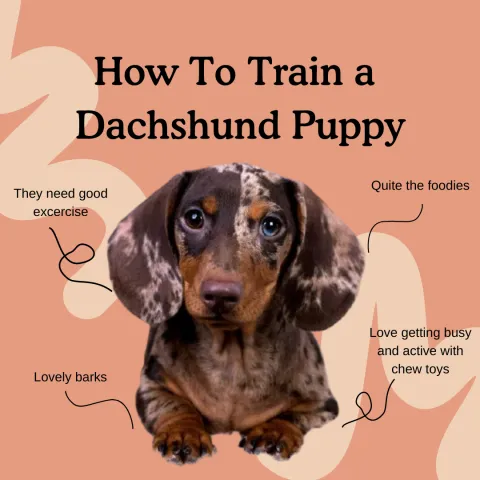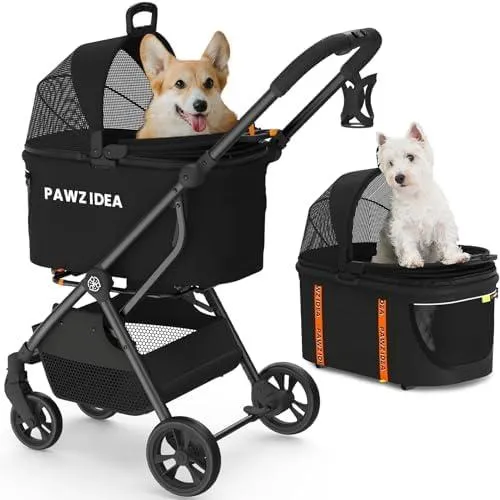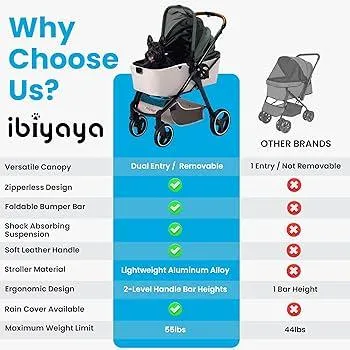Everything You Need to Know About Walking Your Dog in a Stroller
If you have an elderly, disabled, or very small dog, walking them in a stroller can be a great option for getting exercise and fresh air together. However, using a dog stroller does have some considerations to keep in mind. In this article, I’ll cover all the basics of dog stroller use, including:
- Does my dog need a stroller?
- What size and type of stroller should I get?
- How do I train my dog to ride calmly?
- Proper safety procedures
- Common issues and solutions
Determining If Your Dog Needs a Stroller
The main reasons dog owners use strollers are for small dogs, senior dogs with mobility issues, or dogs recovering from injuries. From my experience as a vet tech, toys breeds under 10 pounds and dogs over 10 years old often benefit most. A stroller allows them to enjoy the outdoors without overexerting themselves.
Signs it may help include: limping or stiffness after walks; refusing to go very far; excessive panting or signs of stress. Basically, if regular walks seem painful or tiring for your pup, a stroller could allow them more quality time outside. It’s kind of like a wheelchair for dogs!
Choosing the Right Stroller
When stroller shopping, look for sturdy frames and wide wagon-style beds rather than basket types. The bed should be escape-proof but well-ventilated. I’d also get one with large air-filled tires for rougher terrain. Stuff happens, so make sure it locks for braking too.
As for size, go big. Most small dogs fit in medium and large strollers fine. The extra space helps them feel safe and comfortable while chillin’ during the ride. Don’t skimp on quality either – you definitely get what you pay for with the heavy-duty brands.

Training Your Pup For Stroller Manners
Introducing a nervous dog slowly to the stroller is key. Start inside by giving treats near it and letting them explore at their own pace. Get them used to hearing the clicks of the safety locks too. Outside, first just hang out by the stroller together before any riding occurs.
Once comfortable, keep initial rides short and positively reward calm behavior inside. If they act scared, go back a step and try again later. Be patient – it may take a few weeks until they chill out completely. But before you know it, they’ll be stoked for strollertime!
Safety First When Rolling
Whether on streets or trails, always leash your dog securely inside the stroller. Ensure harnesses or seatbelts fit snugly too. Test the hand brakes before hills or roads. I’ve faced situations where unfastened dogs jumped out suddenly due to a loud sound!
Watch for obstacles, other people/dogs, and be extra attentive at intersections. Reflective strips or a light for nightwalks provide visibility. Also, stay hydrated – the stroller isn’t exactly a breeze for you either on long routes.Safety is no joke when walking dogs, especially tiny pups.
Common Issues and Solutions
Do any of these sound familiar? Chewing – provide dog-safe chew toys. Whining at every person/dog – remain calm and ignore to discourage the behavior. Trying to jump out – use a secure harness or belt them in. Refusing to get in – lure with treats and make entry a positive experience.

Keep training sessions short and focus on bonding during walks. With patience, most dogs adjust quickly. Don’t force it if they seem really uncomfy though. Strollers are a luxury for pets too tired to walk – you do you, pup!
Final Thoughts
In conclusion, dog strollers provide quality exercise and socialization time for canines who can’t manage regular walking. With the right precautions, stroller training, and uses, both you and your pup can stay healthy and happy for years to come. It basically turns any dog, regardless of age or size, into the VIP they are during outings. Even if it takes some adjustment at first, it’s so worth it to keep that paw-tner by your side as long as possible.
Let me know if you have any other stroller questions! I’d be happy to share more of my experience from my days as a vet tech. Wishing you and your pup many more adventures together wherever the sidewalk may lead.
Choosing the Right Walking Stroller for Your Dog
| Stroller Type | Max Dog Size | Key Features |
|---|---|---|
| All Terrain | Medium to Large | Padded seat, large wheels, storage basket |
| Folding | Small to Medium | Lightweight, compact, portable |
| Zipper Enclosed | Small | Fleece lining, protection from elements |
| High Sided | Small to Medium | Prevents jumping, added security |
| Orthopedic | Small to Large | More cushioning, supportive for senior dogs |
FAQ
-
Are dog strollers convenient for taking dogs to the park or on walks?
Basically, dog strollers can be very handy for pups that have trouble keeping up on walks or getting tired easily. They allow dogs to enjoy the outdoors even if they can’t walk long distances. At the same time, strollers do take some getting used to for both dogs and their owners.

-
What size or breed of dog is best for a stroller?
Most dog strollers work best for small and medium-sized dogs under 25 pounds. Bigger dogs may not fit comfortably. Pick a stroller rated for your dog’s weight so it’s not too squished or hanging out the sides. Still, maybe larger strollers exist for great danes and Saint Bernards – I don’t actually have personal experience with those gigantic pups.
-
Won’t dogs feel trapped or stressed in a stroller?
Some pups do seem to dislike being confined in a stroller at first. But most get used to it after a few walks. It helps if they can see out and you use treats and praise to build positive associations. Perhaps try short strolls at first so they don’t think of it as punishment. On the other hand, some pooches totally relax and enjoy the ride!
-
How do you transport a dog safely in a stroller?
For safety, always use the restraint so your pooch doesn’t bail out going down hills. Make sure they’re secure but not squished. It’s also a good idea to attach a leash in case the restraint breaks. Bring water too, since strolling can work up a thirst. I even met a guy who strapped his dachshund into a baby carrier once – quite the conversation starter!
-
Is it okay to leave a dog in a stroller if I go inside a store?
Leaving a dog unattended in a stroller for long periods could cause stress or even be unsafe. Most experts recommend no more than 10-15 minutes alone. It’s best if someone can stay with your pup. Otherwise, you risk coming out to an “accident” or your dog chewing their way to “freedom”! Unless the stroller is completely escape-proof, play it safe and don’t leave them alone too long.
-
What features should I look for in a quality dog stroller?
Things like shade panels, storage bins, adjustable harnesses, comfortable padding, and enough room for your pooch are basics. Perhaps peek at reviews to find one sturdy enough for your dog’s weight and your terrain. On the other hand, cheap strollers may not last. And don’t forget the cute matching bandana – dogs love getting geared up!

-
Is using a dog stroller worth the money and effort?
If you have an elderly, injured or special needs pup, then a stroller can kind of be a lifesaver that allows dogs extra outdoor enjoyment they might not get otherwise. Lazier pups may also appreciate the ride! Still, healthy dogs who enjoy walking may not need one. Despite the costs, strollers offer mobility for some canines that might not have it without. In the end, think about your dog’s needs.
